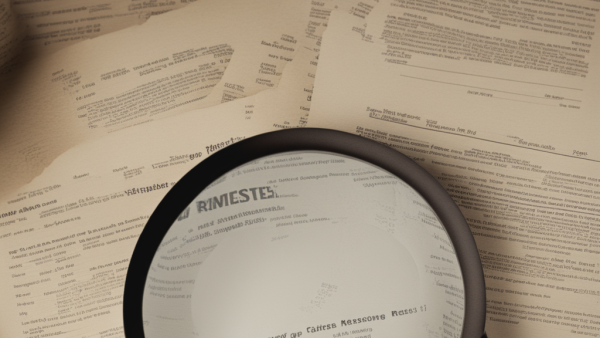
by Sam Franklin | January 16, 2022 | 9 min read
Enterprise Investment Scheme (EIS) advance assurance | The full guide
Get fundedLast updated: April 18, 2022
Before you get new investment injected into your business, you can request pre-approval from the HMRC to confirm that the investment should qualify for the Enterprise Investment Scheme (EIS) and that your investors will therefore benefit from a range of tax reliefs. This is known as ‘advance assurance’.
EIS ‘advance assurance’ is a good way to attract potential investors, who will appreciate this confirmation before investing. Startups or early-stage companies are generally seen as being at higher risk in comparison to investing in more established businesses. Tax reliefs backed up by advance assurance are a way for the UK government to encourage investment into this part of the economy that might otherwise be less forthcoming.
So although it isn't mandatory to apply for EIS advance assurance, doing so can avoid difficulties down the line if, for example, your application for EIS is later rejected after you have already received investment based on the assumption that your business would qualify.
This article will look at exactly what advance assurance involves, how EIS works, and how to check for eligibility.
Table of contents
- What is advance assurance?
- What is EIS and how does it work?
- Why is EIS advance assurance important?
- How do I apply for EIS advance assurance?
- Why wouldn’t I qualify for advance assurance?
What is advance assurance?
Advance assurance, sometimes mistakenly called ‘advanced assurance’, is pre-approval from the HMRC that investment into a company will qualify for a venture capital scheme and be eligible for the related tax reliefs.
There are four venture capital schemes that your business and investment might be eligible for:
The Enterprise Investment Scheme (EIS)
The Seed Enterprise Investment Scheme (SEIS)
Social Investment Tax Relief (SITR)
Venture Capital Trust (VCT)
Each has its own set of eligibility criteria and different tax incentives for investors. As there is quite a lot of information required to make an application for any of these schemes, you should take the time to assess exactly which one you are suitable for to avoid wasting resources and effort on an unsuccessful application.
You can find the advance assurance form for the EIS and SEIS on the HMRC website.
HMRC provide the following overview of the purpose is of applying for advance assurance:
“The advance assurance service is discretionary and non-statutory. There is no requirement for a company to obtain an advance assurance before receiving an investment or issuing shares to investors.”
What is EIS and how does it work?
The EIS is one of the venture capital schemes that might suit your company’s circumstances. The EIS offers a range of attractive tax benefits to investors who buy shares in eligible companies that might otherwise struggle to obtain funding. Investors can benefit from several potential tax reliefs in income tax and capital gains tax.
The purpose of the EIS is to help your company raise the money needed for growth. This is done by selling shares to investors who can benefit from receiving significant tax reliefs.
You can raise up to £12 million in your company’s lifetime at a rate of up to £5 million per year, including money from other venture capital schemes.
Find out more about the scheme
What type of companies qualify for the EIS?
Companies from many different sectors and industries can qualify for the EIS. Eligible companies must have under £15 million in assets, less than 250 employees, and be no more than seven years old. They must also be trading in the UK, be focused on growth and not have ‘excluded trades’ as a substantial part of their business activities.
There are some higher limits in terms of company size and age available to companies operating in sectors involving research and development and innovation. These are called ‘knowledge-intensive’ companies.
Take an in-depth look at the EIS and the eligibility criteria
Why is EIS advance assurance important?
For early-stage companies getting funding from investment can be a difficult task. An important aim of EIS is to encourage investment into these riskier companies, and advance assurance from the HMRC can be used to show that an investment is likely to qualify for EIS tax relief. Most investors in these early-stage companies will want to see advance assurance of EIS qualification.
While you can still get investment without advance assurance it might be harder to obtain. Also, if you act on the assumption that investments in your company will qualify for EIS tax reliefs and then find out that they do not meet the eligibility criteria, this could put you in an awkward situation with your investors.
It’s important to remember that advance assurance does not guarantee that an investment will be eligible for tax relief. It doesn’t consider, for instance, the investors' eligibility for the scheme. For example, if your investor becomes too closely associated with your company, this would prevent a successful claim for EIS tax reliefs – regardless if you received advance assurance.
As well as this, if the nature of the investment or your company's activities or business model changes in the interim before applying for EIS, the application may not be successful.
How do I apply for EIS advance assurance?
You should first look at the specific eligibility criteria and requirements for the venture capital scheme that best suits your company’s circumstances. Each scheme has its own set of requirements that you need to be aware of before submitting an application.
If your business is at an early stage and innovative but beyond the scope of the seed enterprise investment scheme (SEIS), then EIS could be the best fit for you.
Once you have gathered all the information needed for your application, you can draft a cover letter that, although not mandatory, can help provide HMRC with a high-level overview of your business and investment models.
Your advance assurance application form must be sent directly to HMRC:
Email – centre@hmrc.gov.uk
Post – Venture Capital Reliefs Team, HM Revenue and Customs, WMBC, BX9 1BN
Find out more about the process, and check out the HMRC advance assurance application form
What do you need to apply for advance assurance?
You need to provide information about your company and its subsidiaries for all the venture capital schemes mentioned. HMRC will want to understand the structure of your company, what it is that you do, and the funding model you have in place.
Making the application requires some leg work gathering together all the necessary information, and you may want to outsource some of the application process to experts in this field.
See more details on the information needed to apply
Who can make the application?
Any type of company can apply for advance assurance, but you must make sure you fill out the application form correctly for it to be assessed.
There are four people in an organisation who can complete the application:
The company secretary
A director
A trustee, if the social enterprise is a charitable trust
An agent to apply on your behalf
What happens after you apply?
HMRC will give you their decision and a statement saying that the investment is likely to be EIS-qualified or tell you why your application was unsuccessful. If your application was not completed in full, HMRC will not provide you with any feedback.
If all the conditions remain the same around the investment and your company, you can then go ahead and apply for the EIS and get the certificates necessary for investors to get the scheme’s tax reliefs.
If you were unsuccessful with a correctly completed application and things change to bring your business into line with EIS conditions, you can again apply for advance assurance.
How long does it take to hear back from the HMRC?
There isn’t a set time when you will hear if your application has been successful or not. It depends on the nature of the application and the assessment it requires. Some applications may be more complex than others and demand more investigation by HMRC, and in these cases, it may take longer to receive an answer.
What is an EIS1 form?
After receiving advance assurance, the next step is to complete an EIS1 form. You need to complete this form to get the EIS3 certificate that investors will need to claim the tax relief on their investment. When your company has been trading for four months, then you are eligible to submit the EIS1 form to HMRC’s Small Companies Enterprise Centre (SCEC).
Regardless if you have already received advance assurance from HMRC or not, it is only following your submitted EIS1 form being reviewed and assessed that you will have confirmation of EIS qualification. If you are successful, the SCEC will issue an EIS3 certificate that you can distribute to shareholders.
Why wouldn’t I qualify for advance assurance?
Most industries and sectors can qualify for the EIS if their business activities aren’t mostly made up of ‘excluded activities.’
See more on ‘qualifying tasks’ and ‘excluded activities’ on the HMRC website
Some examples of excluded activities are in the areas of property or financial services. If these activities comprise less than 20% of the total of what your company does, you should still be able to qualify for EIS advance assurance.
It is important to be realistic and accurate when telling HMRC how much investment you are hoping to raise. If you have a small startup with low initial overheads, then you shouldn’t, for example, say that you want to raise the full EIS maximum of £5 million. It will ring alarm bells for HMRC about your business planning.
The HMRC needs to be able to clearly understand the structure of your company, the business plan and the aims for the proposed investment. You must make sure that the application is completed in full with all the relevant information and documentation included.
It is also important to be aware that there isn’t a right to dispute the decision of HMRC to grant advance assurance. You should be extra careful that your initial application is fully complete and accurate. However, if the circumstances of your business change to bring you inside the EIS requirements, you can submit another application.
Have you been unsuccessful with an application for EIS advance assurance or another venture capital scheme? If your circumstances are not likely to change to help you qualify, then you can speak to our team about an alternative to venture capital that can help your startup or early-stage company on the path to success. We’re here to help fund your business and are ready to speak to you.
Written by

Sam founded his first startup back in 2010 and has since been building startups in the Content Marketing, SEO, eCommerce and SaaS verticals. Sam is a generalist with deep knowledge of lead generation and scaling acquisition and sales.


